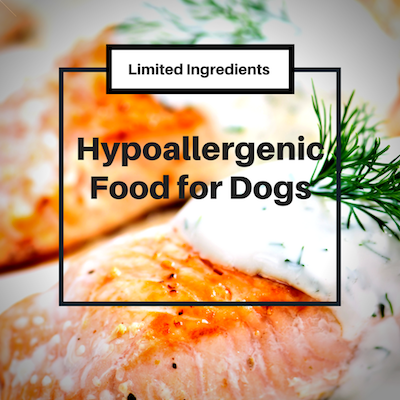Let’s talk a bit more about food allergies. Honestly, there’s no easy way to deal with it. This journey is long and will consist of a lot of trial and error. Treatment will involve removing common allergens from their diet, then reintroducing them slowly to determine the culprit (or culprits). Hypoallergenic food for dogs is available in both prescription and commercial options. And as always, you should consult your vet if you think your dog may have a food allergy.
Food Allergies
Many people believe that some dogs are genetically predisposed to develop allergies. So once there are exposed to the allergen, symptoms may soon follow. Symptoms of food allergies are much the same as those of environmental allergies. Irritated or itchy skin, hair loss, and even ear infections. And unlike seasonal or environmental allergens like dust or pollen, your dog can’t avoid food. So if these symptoms seem to be chronic, it might be a food allergy.
A food allergy happens when the dog’s immune system misidentifies an ingredient (often a protein) as an invader. This causes the body to react accordingly and the resulting side effect is an itchy one.
Sometimes food allergies can be misidentified as food intolerance.
However, these symptoms tend to be more gastrointestinal, such as gas, vomiting, or diarrhea.
This is a great way to test for food intolerance in your dog…
Common Food Allergens
You shouldn’t be surprised to know that the most common triggers for food allergies are the most common ingredients in commercial dog foods. They include:
- Beef
- Chicken
- Corn
- Wheat
- Soy
- Fish
- Pork
Grains also come in to play. You will see a lot of companies boasting their hypoallergenic food for dogs as “grain free.” It’s actually not necessarily the grain that’s the problem. Often, the grains used in dog food are low quality, and can be contaminated with other allergens. Either way, eliminating grains from your dog’s diet is probably a good idea.
Diagnosis and Treatment
Ok, so you have consulted your vet and you think your dog may have a food allergy. Now what? Well, the only real option is a food elimination diet. Funny thing, you actually do the treatment before you have a diagnosis. In an elimination diet, you are removing ingredients from your dog’s food in order to determine what is causing the reaction.
Elimination Diet
The first step is to switch their food to one with a novel protein that they have not eaten before. This could be kangaroo, bison, venison, or something else. They will need to stay on this food for several weeks to see if the allergy symptoms disappear. If not, you will need to switch foods again until you can find one that works.
There are many limited ingredient foods that are available as well. We mentioned some of them in our previous post, 9 Remedies for Itchy Dogs. Here are a few others that you might want to try:
Natural Balance Limited Ingredient – Sweet Potato & Venison
Wellness Simple Natural Limited ingredient Salmon & Potato
P.S. Limited Ingredient – Lamb (This is a 2 lb bag of food. Some people use it as a treat)
In addition to these, you can also get a vet prescribed hydrolyzed diet. This food works by breaking down the proteins so much that the dog’s body can’t detect them. It’s probably the most effective way to do a food trial, but it will also be the most expensive. And your dog will need to be on it for at least 12 weeks. During the trial, your dog can not have any other food. No table scraps. Not even treats. Only trial food and water. This is very important. If your dog eats anything else once you start the trial, you’ll need to start the 12 week clock over again.
Reintroduction
After 12 weeks, hopefully the symptoms have subsided. Great news, it worked! Now let’s start feeding them those allergen riddled ingredients again (Say what now?). Actually, the only way to figure out what was causing the issue (and what you will need to avoid going forward) is to slowly add it back to their diet one ingredient at a time. You will probably know within a week if an ingredient is causing the allergy symptoms. Once you find it, eliminate from your life! Or at least your dog’s life. Remember, they might be allergic to more than one ingredient. I know, I know. But you want to be thorough, right?
If you want to know what NOT to feed your dog, take a look at this infographic from My Sweet Puppy. Make sure these ingredients are not listed on your dog’s food labels.
Homemade Dog Food
If you want to have complete control over your dog’s food, you could always make your own at home. I’ve written a couple post about this before, so I won’t go into depth here. But if you do choose this route, do your research. You need to make sure your dog is getting the appropriate ratio of protein, carbs, and fats. Here’s a link to a previous post about homemade dog food.
So there are a few options when it comes to hypoallergenic food for dogs. I wish you luck on your food allergy journey. Let me know what works best for your itchy pup.



